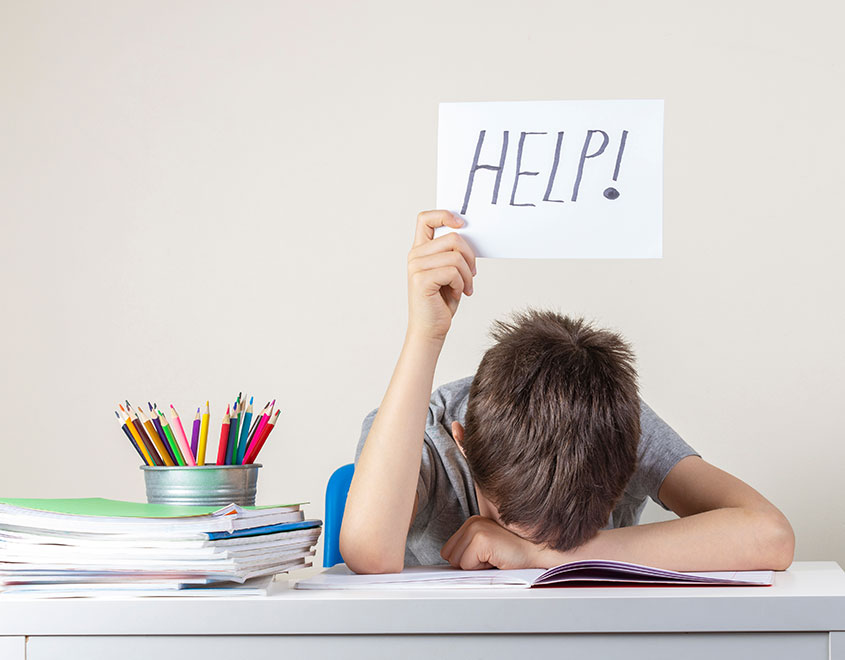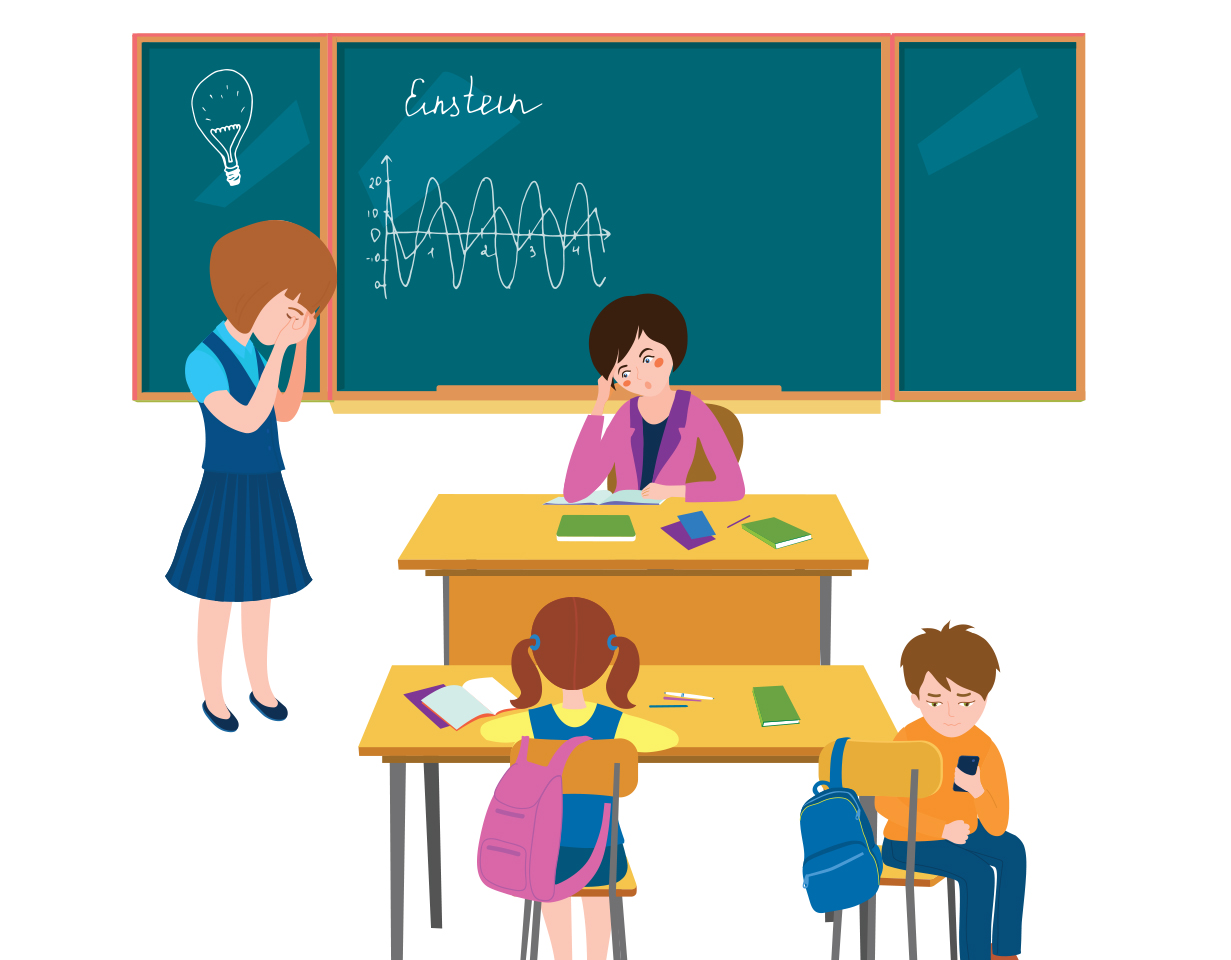
Have you observed any odd or concerning behaviors among the students that deviate from the usual? Are you worried that your student may be going through burnout? What signs point to a burned-out student? Do we need to understand how student burnout affects their mental and academic well-being? As a teacher what can you do to support students who are experiencing burnout? Many questions like these pop into our head, when discussing the problem of student burnout.
Burnout has grown to be a serious problem impacting students of all ages in stressful educational settings nowadays. A condition of constant stress known as “burnout” is characterized by a loss of sense of success, a lost interest in learning, and physical, emotional, and mental tiredness. To effectively manage and support students in managing this difficult condition, parents, teachers, and other professionals in education must be able to recognize the signs of burnout.
Also Read: How To Make The Best Out Of The New School Year
Burnout in students, similar to adults, is a state of physical, emotional, and mental exhaustion caused by prolonged stress and pressure. However, in students, burnout often manifests in response to different stressors and can be more challenging to identify. This condition is especially concerning because students are still developing and learning how to cope with stress and pressure.
Why do students experience burnout?
- High Academic Expectations: The pressure to achieve high grades, excel in exams, and maintain a strong academic performance can be overwhelming. This pressure can come from parents, teachers, peers, or the students themselves.
- Overloaded Schedules: Many students juggle a heavy load of classes, extracurricular activities, part-time jobs, and social commitments. This relentless schedule can lead to physical and mental exhaustion.
- Lack of Work-Life Balance: Students may struggle to find a healthy balance between school work and personal time. The inability to relax and detach from academic responsibilities can contribute to burnout.
- Perfectionism: Students who set excessively high standards for themselves and strive for perfection in every task may be more prone to burnout. The fear of failure and constant self-criticism can be mentally draining.
- Transition Periods: Transitions, such as moving from high school to college or starting a new academic program, can be stressful and challenging, potentially leading to burnout.
- Limited Coping Strategies: Some students may not have developed effective coping mechanisms to handle stress, leading to poor management of academic and personal challenges.
- Financial Stress: Concerns about tuition fees, student loans, and living expenses can add significant stress, contributing to burnout.
- Social Pressures: Navigating social relationships and fitting in with peers can be an additional source of stress, especially in an environment where there is a strong focus on social status and popularity.
- Online Learning Challenges: For students engaged in online learning, the lack of face-to-face interaction, technical issues, and the challenge of self-motivation can be additional stressors.
- Mental Health Issues: Students with underlying mental health conditions, such as anxiety or depression, may be more susceptible to burnout.
Key signs of burnout in students
- Emotional Exhaustion: This is often the first and most noticeable sign. Students may seem constantly tired, overwhelmed, and unable to cope with daily tasks. They may express feelings of hopelessness or helplessness.
- Physical Symptoms: Chronic stress can manifest physically. Look for signs like persistent headaches, stomachaches, changes in appetite, and disrupted sleep patterns. Frequent illnesses due to a weakened immune system can also be a symptom.
- Reduced Academic Performance: A noticeable drop in grades or a lack of engagement in schoolwork can be indicative of burnout. Students might miss assignments, perform poorly on tests, or exhibit a lack of concentration and motivation.
- Detachment and Cynicism: Burnout can make students more cynical and detached from their school environment. They may express negative attitudes toward school, teachers, or education in general.
- Decreased Satisfaction and Sense of Accomplishment: Students may feel that no matter how hard they work, it’s never good enough. This can lead to a significant decrease in self-esteem and a sense of accomplishment.
- Withdrawal from Social Activities: Students suffering from burnout often withdraw from social interactions, extracurricular activities, and hobbies they used to enjoy.
- Changes in Behavior: This can include irritability, mood swings, and a general lack of enthusiasm for things they used to find interesting or enjoyable.
How does burnout affect students’ academic performance and mental health?
1. Academic Performance
- Decreased Concentration and Focus: Burnout can impair cognitive functions, making it difficult for students to concentrate on their studies, understand new information, and retain knowledge.
- Reduced Academic Achievement: The exhaustion and lack of motivation associated with burnout often lead to a decline in academic performance. Students may struggle with assignments, perform poorly on exams, or even skip classes.
- Decreased Engagement and Motivation: Students experiencing burnout often lose interest in their studies. This lack of engagement can lead to a disconnection from the learning process and a reduction in effort.
- Increased Absenteeism: Burnout can lead to physical and mental health issues that cause students to miss more school, further affecting their academic performance.
- Impaired Cognitive Abilities: Chronic stress and fatigue can negatively impact memory, problem-solving skills, and creativity, hindering academic performance.
2. Mental Health
- Emotional Exhaustion: Burnout often leads to feelings of being emotionally drained, overwhelmed, and unable to cope. This can manifest as persistent tiredness, sadness, or a sense of hopelessness.
- Increased Anxiety and Depression: Burnout can exacerbate or lead to mental health issues such as anxiety and depression. The constant state of stress and pressure can take a significant emotional toll.
- Lowered Self-Esteem: As academic performance declines, students may begin to doubt their abilities and suffer from reduced self-confidence and self-worth.
- Physical Health Problems: Chronic stress can manifest in various physical symptoms such as headaches, stomach issues, sleep disturbances, and a weakened immune system.
- Detachment and Cynicism: Students may become more cynical and detached from their studies and school environment, which can affect their social interactions and overall outlook on education.
- Risk of Unhealthy Coping Mechanisms: In an attempt to deal with stress and burnout, some students may turn to unhealthy coping mechanisms, such as substance abuse, excessive gaming, or other risky behaviors.
How can you help your students from being burnt out?
Teachers play a crucial role in helping prevent and mitigate student burnout. By creating a supportive classroom environment and being mindful of students’ overall well-being, you can significantly reduce the risk of burnout. Here are several strategies you can employ:
a. Foster a Positive Classroom Environment:
Create a classroom atmosphere that is encouraging and supportive. Acknowledge students’ efforts, celebrate their successes, and provide constructive feedback in a manner that motivates rather than discourages.
b. Encourage Open Communication:
Let students know they can talk to you about their struggles. Regularly check in with them, especially if you notice changes in their behavior or performance.
c. Promote Balanced Workloads:
Be mindful of the amount of homework and assignments you give. Ensure that the workload is manageable and consider the demands of other classes students might be taking.
d. Integrate Stress-Relief Activities:
Incorporate activities that reduce stress into the classroom routine. This could include mindfulness exercises, short breaks, or creative tasks that allow students to express themselves.
e. Teach Time Management Skills:
Help students develop effective time management and study skills. This can include lessons on how to organize tasks, prioritize work, and take effective breaks.
f. Adapt to Individual Needs:
Recognize that each student is unique. Be flexible and adapt your approach to accommodate different learning styles and needs.
g. Encourage Healthy Habits:
Educate students about the importance of sleep, nutrition, exercise, and relaxation. Incorporate discussions or activities that promote a healthy lifestyle.
h. Provide Resources for Additional Support:
If you notice a student struggling significantly, guide them to appropriate resources, such as school counselors, mental health services, or academic support services.
i. Minimize High-Stakes Pressure:
While tests and exams are part of education, try to reduce the high-stakes pressure associated with them. Offer alternative forms of assessment when possible and provide opportunities for students to improve their grades.
j. Involve Parents or Guardians:
When appropriate, communicate with parents or guardians about their child’s progress and any concerns. Work together to support the student’s well-being.
k. Model Healthy Behavior:
You can be a powerful role model. Show students how to handle stress in healthy ways and maintain a work-life balance.
l. Encourage Teamwork and Collaboration:
Promote a collaborative environment where students can work together and support each other, reducing the feeling of isolation that can contribute to burnout.
Is there any support system that is available to help these students?
- School Counselors and Psychologists
- Academic Advisors and Tutors
- Peer Support Groups and Wellness Programs
- Online Resources and Helplines
- Extracurricular Activities help connect with peers and provide a healthy outlet for stress
- Family Support
- Community Mental Health Centers
- Educational Workshops and Seminars
- Teacher Support
Also Read: What Are The Impacts Of Teacher Burnout On The Education System?
Recognizing and addressing student burnout is vital for their overall well-being. By understanding the signs and knowing how to offer support, you can help students navigate through this challenging period. Remember, the goal is not just academic success, but fostering a healthy, balanced, and happy life for the student.






Social